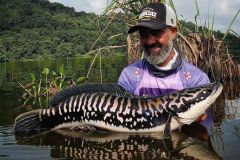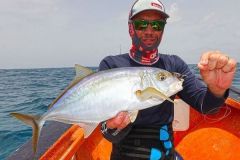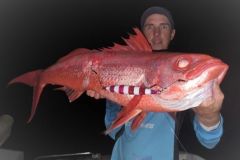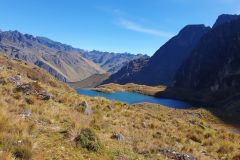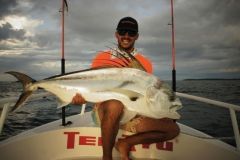Sinnamary: the world's hot spot for a´mara
Rising in the commune of Saint-Elie, the Sinnamary river winds its way through the Amazon rainforest for almost 260 km before emptying into the Atlantic Ocean in the commune of Sinnamary, from which it takes its name. Fed by various creeks (Amazonian streams) that swell its course, it has the particularity of being punctuated by a plethora of jumps. This term, specific to French Guiana, refers to sections of rapids where the rocks are outcropping, creating areas of high turbulence that mark out the biefs.
The river then flows into the Petit-Saut dam lake, well known for its singular landscape of dead trees emerging from the water, remnants of the primary forest that occupied the area before it was impounded in 1994. Unfortunately, the exploitation of this wood, which began this year, for biomass (totally laughable when you look closely at the project) and furniture purposes, is dooming this fantastic setting.
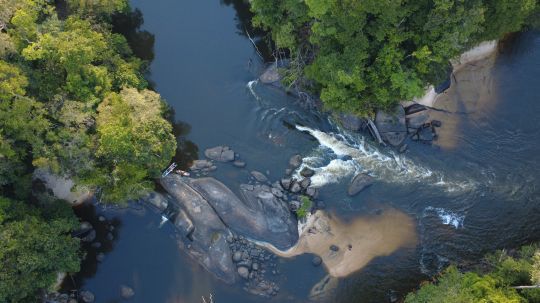
Most fishing expeditions therefore start at the dam and work their way upstream to certain jumps: Takari jump, Dalles jump, sometimes higher, depending on the duration of the latter. The difficulty is great. Crossing the jumps requires boats to be carried, sometimes over long distances through the forest, naturally limiting the areas accessible to anglers.
So we decided to do things differently. Helicopter drop-off and kayak descent over 10 days, to fish the less crowded areas and give ourselves the chance to hit some beautiful fish, which are becoming increasingly rare near the lake. A total immersion in nature, dedicated to observing the wildlife and tracking the only fish predator to haunt these waters, making this river the world's hot spot for the species.
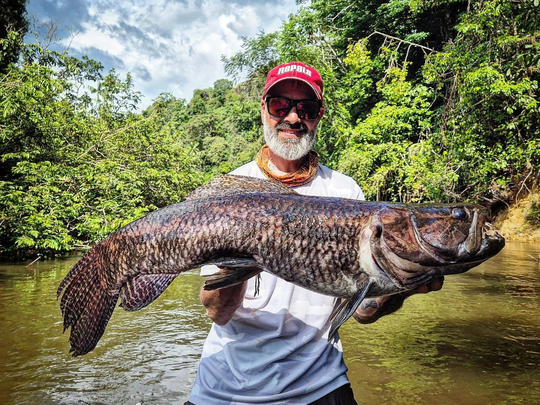
10 days on the river
This type of excursion allows you to completely isolate yourself from the rest of the world. You're on your own, facing the swarming, suffocating immensity that is the Amazon rainforest. A return to nature, far from the roar of civilization and technology, and it feels good. The helicopter is also a good way of streamlining your gear, packing only the essentials for the most intense adventure possible.
Once the kayaks and bivouac gear are loaded, all that's left is room for personal items (40-60 L waterproof bag), fishing gear (bakkan or smaller waterproof bag) and rods, if you haven't opted for travel models. The whole package should keep you dry for 10 days.
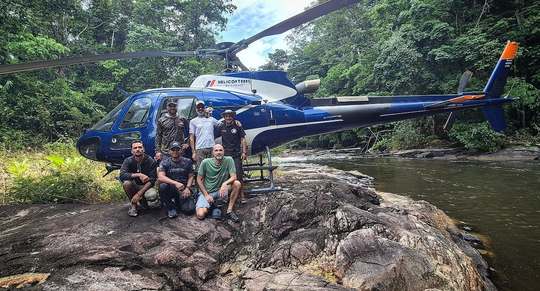
During the descent, you'll have to change camps almost every day, so your belongings need to be organized in such a way as not to take up too much space in the boats, but also to provide you with a certain degree of comfort when setting up and packing down. In my opinion, the use of waterproof kits as travel organizers is a plus.
Days are punctuated by sunrise and sunset. Evenings are punctuated by the evening meal, sharing a grilled a´mara and listening to everyone's stories. Then finally comes the much-deserved rest.
Wild nature and incredible livestock
The advantage of kayaking the river in this way is the silence that reigns in the boats. It's ideal for observing and listening to the wildlife that inhabits the area. You'll have the pleasure of spotting giant otters, tapirs, capybaras, Amazon macaws and toucans, and hearing howler monkeys in the early hours of the morning, all amid an indescribable cacophony of insects creating a permanent background noise that you'll soon forget. Nature is a sight to behold for those who know how to observe it. And if you're lucky, you might even catch a glimpse of a jaguar.
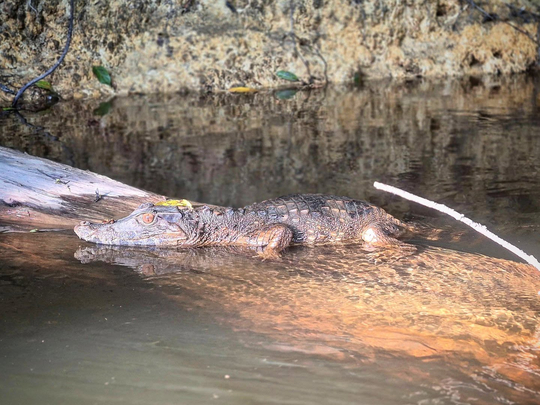
In the water, it's a completely different atmosphere. There's no hint of what's going on below. The absolute master here is the aimara. Unlike other rivers in French Guiana, which may be home to tiger torches, piranhas or even a few peacock bass, here there are two types of fish: the prey and the hunter, the killing machine par excellence. Ambushed in the chaotic heaps that litter the river bed, they wait only for the passage of a carp or a small pacu to emerge from their hiding places. Prey or lure... With teeth that would make any freshwater fish pale into insignificance, with the possible exception of the tiger fish, the amara is one of the rare fish to have a membrane covering the front of its teeth, so that even its weapons are camouflaged.
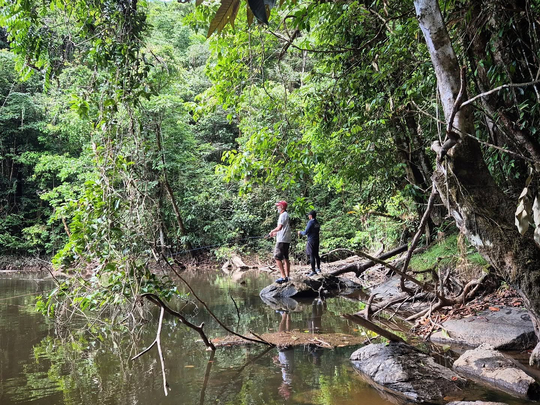
You'd think these fish would all have the same coat, but that's not the case. In fact, their colors change to blend in with the environment in which they nestle, from the deep black of the pits to the light color of the sandbanks, or with shades of green and red like the pigments found in the soil of the river banks. And their density is simply incredible. This is where we see the appeal of these protected areas, subject to very low fishing pressure. The bites can follow one another at rhythms we'd never dream of...

 /
/ 



